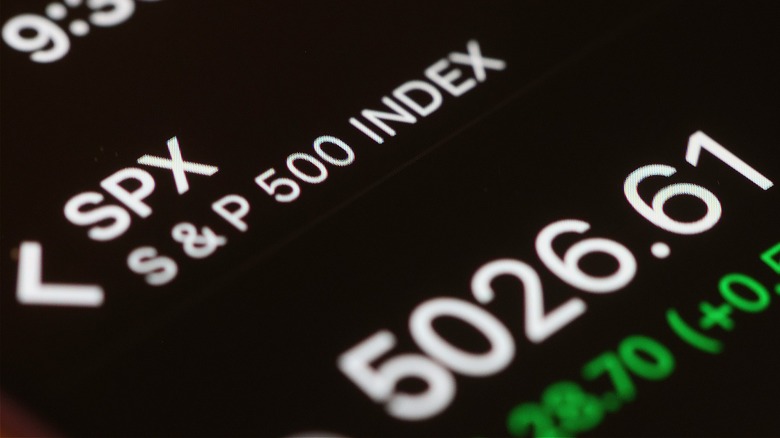How Often Does The S&P 500 Rebalance?
For many investors, buying exchange-traded funds, or ETFs, that track the performance of major stock indexes is a popular way to get involved in the equities market. But what exactly is an index? Simply put, an index is a basket of stocks or other investments that represent a specific segment of the market. The "Dow," for example, refers to the Dow Jones Industrial Average, a longstanding index of 30 publicly traded blue-chip companies meant to represent the health of the broader U.S. economy. The Standard & Poor's 500 (or S&P 500), meanwhile, is a collection of the 500 largest publicly traded United States companies (aka, large-cap stocks).
Created in 1957 (about 60 years after the Dow), the S&P 500 is said to envelop about 80% of all publicly traded stocks. Nowadays, a strong argument could be made that the S&P 500 has dethroned the Dow Jones as the benchmark traders, such as mutual fund managers, use to measure both their own performance and that of the overall U.S. stock market.
Which brings us to index rebalancing, specifically, at the S&P 500. Because the 500 stocks in the S&P's flagship index fluctuate in value over time, that means some new companies will be added to the index periodically, while others are removed, a process known as index rebalancing. The S&P 500 rebalances on a quarterly basis (as does the Dow Jones and the Nasdaq-100 Index).
How frequently are indexes rebalanced?
As said, at the S&P 500, rebalancing is conducted quarterly. To be exact, it typically occurs on the third Friday of the following months: March, June, September, and December. However, rebalancing can also occur outside of those pre-planned dates if a company is subject to a sudden event such as a merger or acquisition. Similarly, negative events like bankruptcy or getting delisted can trigger an impromptu rearranging of the index's holdings.
Besides having a qualifying market cap — defined as the number of outstanding shares multiplied by share price — Standard & Poor also requires that a company's earnings be positive in the most recent quarter, as well as four quarters into the past.
Discussing the rebalancing criteria and frequency of every index may be too cumbersome for this particular article, but know that the overall mission of index rebalancing is to maintain an index that is relevant in the current marketplace and true to its original intent, whatever that might be. When a company is no longer suitable for inclusion in a particular index, which could be for a multitude of reasons, it'll be removed and replaced. Though to be clear, rebalancing in the S&P 500 is based on market cap solely.
What rebalancing means for investors
It's common for the share price of companies entering the S&P 500 (or any major stock index) to rise following the announcement. That's because this inclusion is viewed as a sort of validation or accomplishment for the company. But perhaps more importantly than optics, it means that index funds, which track the underlying index, will need to purchase shares of the new company(ies) in order to mirror the index's performance.
At the other extreme, companies that are removed from an index can experience a decline in their value based on volume-selling by index funds and/or an overall negative perception stemming from the removal during rebalancing. Certain stock traders are highly attuned to these index-rebalancing machinations, which can represent a profitable arbitrage opportunity, albeit a short-term one.
Investors who own index funds as part of a long-term strategy (for example, holders of retirement accounts) won't likely be significantly affected by rebalancing, as the selected indexes continue to track the performance of the overall stock market or industry sector. However, investors who buy and sell shares in individual companies will want to keep an eye on their inclusion in indexes.


